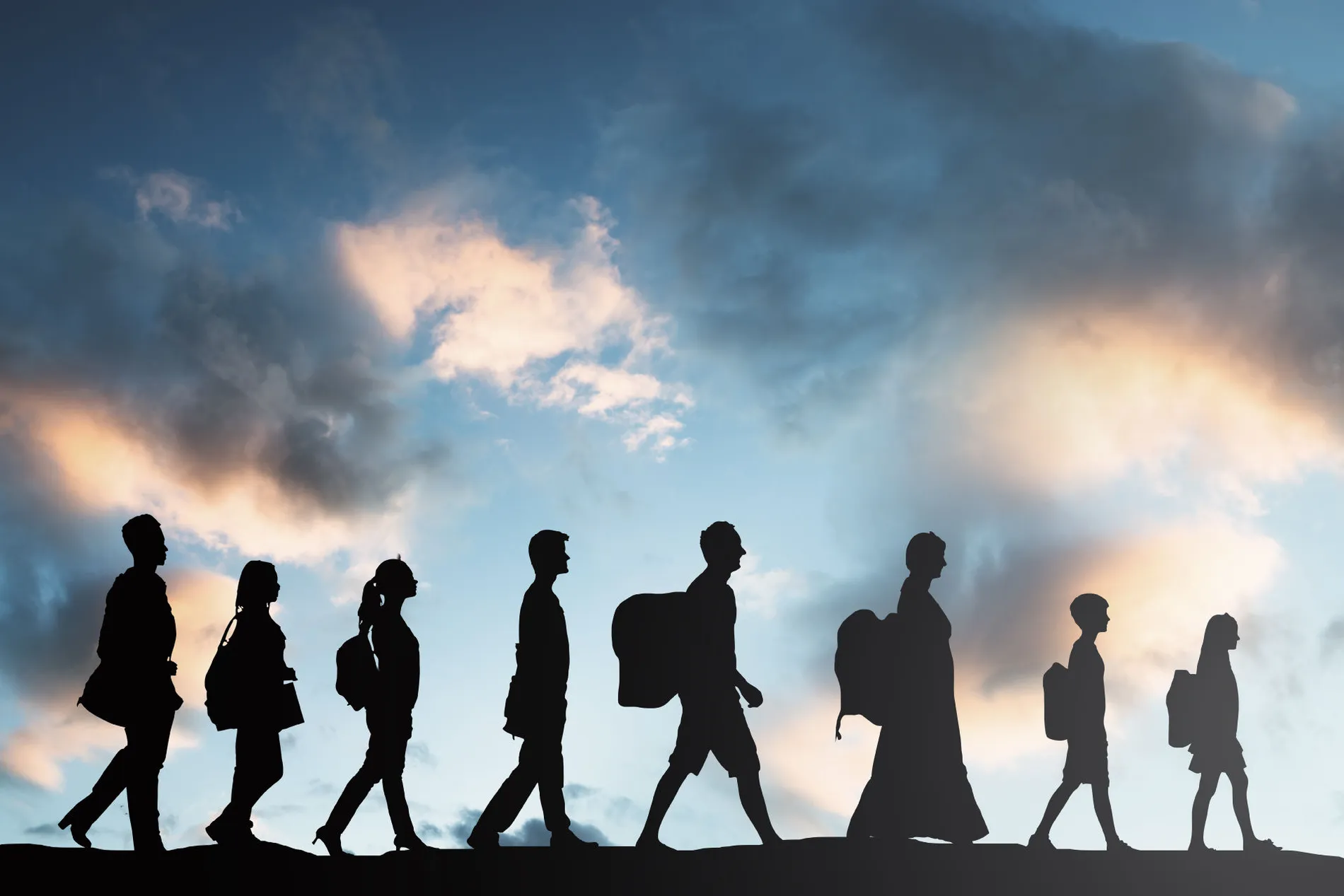Namibia, a country known for its vast deserts, diverse cultures, and rich natural resources, has a unique demographic landscape shaped by internal and external migration patterns. The movement of people, both within the country and across its borders, has played a significant role in the shaping of Namibia’s population. The recent census data provides valuable insights into these migration patterns, offering a clearer picture of the forces that drive population shifts and the resulting demographic changes. This article delves into Namibia’s migration patterns, examining the factors that influence movement, the impact of migration on urbanization, and what the latest census reveals about the country’s population dynamics.
Understanding Namibia’s Migration Landscape
Migration, the movement of people from one place to another, is a key component of a country’s population dynamics. In Namibia, migration patterns are influenced by a variety of factors, including economic opportunities, political circumstances, environmental changes, and social factors. Migration can be categorized into two primary types: internal and international.
- Internal Migration: This refers to the movement of people within Namibia, typically from rural to urban areas in search of better opportunities or improved living conditions.
- International Migration: This involves the movement of people across Namibia’s borders, whether it be for economic, political, or social reasons. Namibia shares borders with Angola, Zambia, Zimbabwe, Botswana, and South Africa, making it an important player in regional migration dynamics.
Key Drivers of Migration in Namibia
There are several factors that influence both internal and international migration in Namibia. These factors can be economic, social, political, or environmental in nature, and they often interact in complex ways. The most significant drivers of migration in Namibia include:
- Economic Opportunities: Economic factors are among the primary drivers of migration in Namibia. The search for better job prospects, higher wages, and improved living standards often leads individuals to migrate. Urban areas like Windhoek, Walvis Bay, and Swakopmund are attractive destinations due to their growing economies, employment opportunities, and access to services. Conversely, rural areas, which are more dependent on agriculture and livestock farming, may not offer the same level of economic opportunities, leading people to move to cities in search of work.
- Urbanization: Namibia has experienced significant urban growth in recent decades, with more people moving from rural regions to cities. According to the 2021 Census data, over 54% of the population now resides in urban areas, a significant increase from previous decades. This urban migration is largely driven by the availability of better infrastructure, educational institutions, healthcare facilities, and job opportunities in cities.
- Political and Social Factors: Political instability, social unrest, and conflicts in neighboring countries have also contributed to international migration patterns. Namibia’s history, particularly the liberation struggle for independence, saw many Namibians migrate to neighboring countries as refugees. Today, Namibia continues to host migrants from countries such as Angola, Zimbabwe, and South Africa, who seek refuge from political or economic turmoil in their own countries.
- Environmental Factors: Namibia is a largely arid country, and environmental factors such as droughts, water scarcity, and land degradation can drive people to migrate in search of better living conditions. Rural communities, especially those dependent on agriculture, are vulnerable to the impacts of climate change, which can lead to a migration shift toward urban centers or neighboring countries with more favorable environmental conditions.
- Family and Social Networks: Family ties and social networks also play a significant role in migration. In many cases, individuals migrate to join family members already living in urban areas or abroad. These social networks provide crucial support systems for migrants as they navigate the challenges of settling in new environments.
Internal Migration Trends: The Urbanization Boom
Internal migration in Namibia is primarily characterized by a shift from rural to urban areas, a phenomenon that is common across much of sub-Saharan Africa. Namibia’s urbanization rate has been steadily increasing, with Windhoek, the capital city, serving as the largest urban hub in the country. The 2021 Census revealed that urban areas are growing rapidly, particularly in the central and coastal regions, where economic development and infrastructure investments have spurred migration.
One of the key contributors to urban migration in Namibia is the country’s economic growth. Urban centers, particularly Windhoek and Walvis Bay, offer diverse employment opportunities in industries such as manufacturing, trade, tourism, and services. These cities also provide better access to education, healthcare, and other social services, making them attractive destinations for people from rural areas seeking improved living standards.
However, this rapid urbanization has also created challenges. Cities are facing pressure on infrastructure, housing, and basic services due to the influx of new residents. Informal settlements have grown around major cities, and issues such as unemployment, poverty, and inadequate housing remain prevalent.
International Migration: A Regional Hub
Namibia’s location in Southern Africa positions it as a significant player in regional migration dynamics. While internal migration trends are largely driven by urbanization and economic opportunities, international migration in Namibia is influenced by both regional economic integration and political factors. The country shares borders with Angola, Zambia, Zimbabwe, Botswana, and South Africa, and these neighboring countries are key sources of migration to Namibia.
- Migration from Neighboring Countries: Namibia’s close proximity to Angola and Zimbabwe has resulted in a significant influx of migrants from these countries, especially during periods of political and economic instability. For example, during the civil war in Angola and the land reform crisis in Zimbabwe, many people sought refuge in Namibia. These migrants often come seeking better economic prospects or fleeing from conflict and instability.
- Economic Migration: Economic migration within the Southern African Development Community (SADC) region has also contributed to Namibia’s population dynamics. Namibia’s relatively high per capita income and stable economy compared to some of its neighbors make it an attractive destination for skilled and unskilled labor from countries like Zimbabwe and Angola. Migrants often seek work in sectors such as construction, agriculture, and mining, and many contribute to the country’s growing industrial base.
- Cross-Border Trade and Labor Migration: Namibia has long been a hub for cross-border trade and labor migration in the region. Seasonal migration for agricultural work, particularly from neighboring countries, has historically played a role in shaping migration trends. Namibia’s agricultural sector, which includes large-scale commercial farming, often relies on migrant labor, particularly for harvesting and seasonal tasks.
Census Data and Insights on Migration Patterns
The 2021 Census provided crucial data on Namibia’s migration patterns, offering a comprehensive snapshot of both internal and international migration. According to the census, internal migration has been a major driver of demographic change in Namibia, with a significant movement of people from rural areas to urban centers. This trend is expected to continue, with urban populations projected to increase in the coming years.
The census also revealed that Namibia has seen a steady increase in international migration, with migrants coming from neighboring countries seeking employment, refuge, or better living conditions. The demographic profile of these migrants includes both skilled workers and refugees, with a growing number of people moving to Namibia for economic opportunities in sectors such as construction, retail, and agriculture.
Furthermore, the census data highlights the impact of migration on Namibia’s population distribution. The northern regions, which are more rural and less economically developed, have seen a population decline as people migrate to cities in search of better prospects. In contrast, urban centers have seen population growth, which has led to an increased demand for infrastructure and services.
The Impact of Migration on Namibia’s Future
Migration will continue to play a significant role in shaping Namibia’s demographic and economic future. Internal migration, driven by urbanization and economic opportunities, will likely lead to further growth in cities like Windhoek and Walvis Bay, while rural areas may face population decline.
This urbanization trend will require careful planning and investment in infrastructure, housing, education, and healthcare to ensure that the growing urban populations are adequately supported. Namibia will also need to address challenges related to informal settlements and unemployment in urban areas.
International migration, particularly from neighboring countries, will continue to influence Namibia’s population dynamics. As a regional economic hub, Namibia will need to ensure that it has the necessary policies and infrastructure in place to support migrants, particularly in terms of labor rights, social services, and integration into the broader society.
Namibia’s migration patterns are shaped by a variety of factors, including economic opportunities, political stability, environmental conditions, and regional dynamics. The 2021 Census provides valuable insights into the country’s population shifts, revealing the ongoing trend of urbanization and the growing influence of international migration. As Namibia continues to develop, migration will play a central role in the nation’s demographic future, presenting both opportunities and challenges for policymakers, businesses, and communities alike. Understanding these patterns is crucial for planning the country’s future and ensuring sustainable development in the face of demographic changes.
Join 'Namibia Today' WhatsApp Channel
Get the breaking news in Namibia — direct to your WhatsApp.
CLICK HERE TO JOIN












